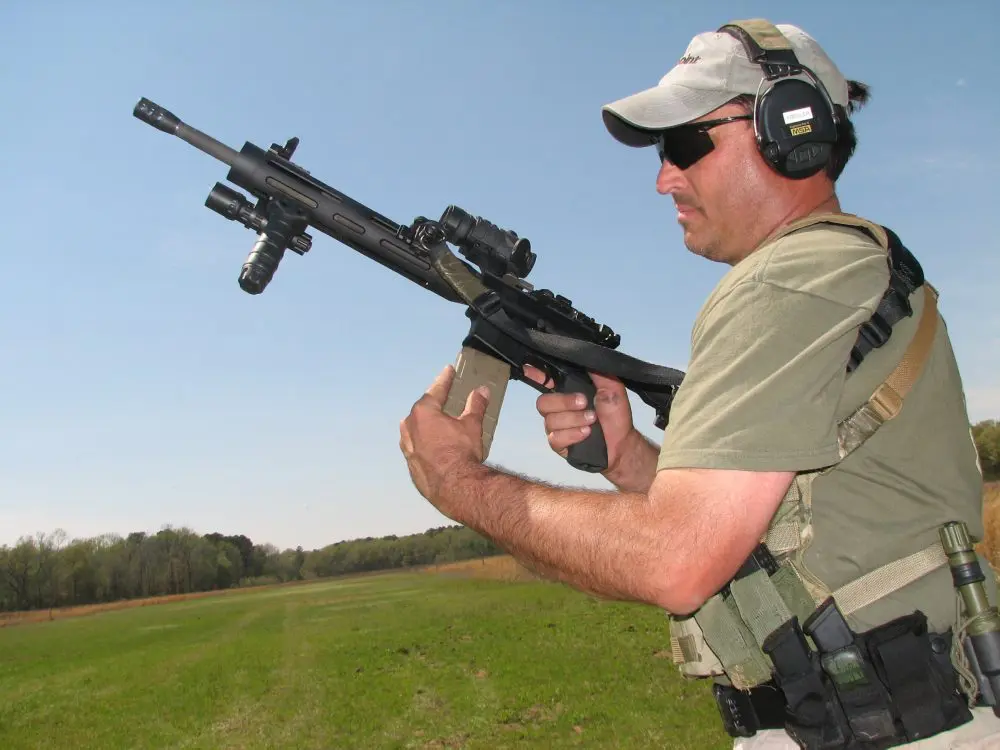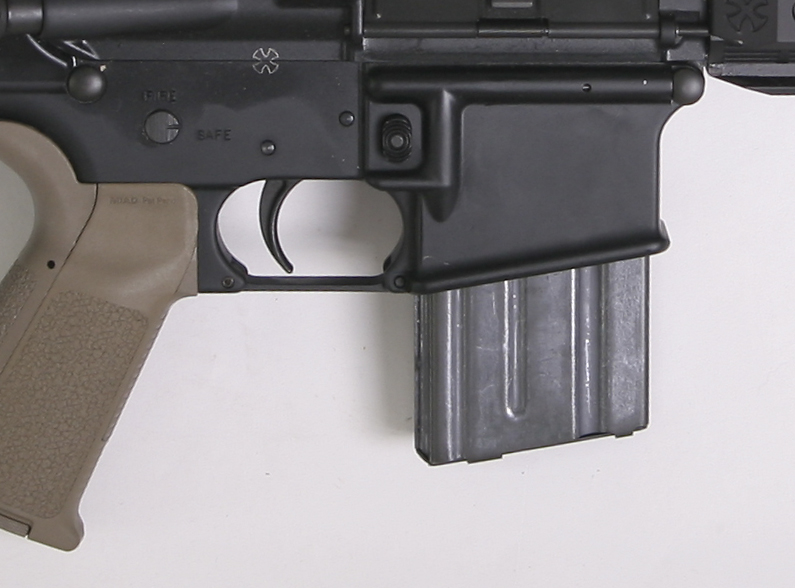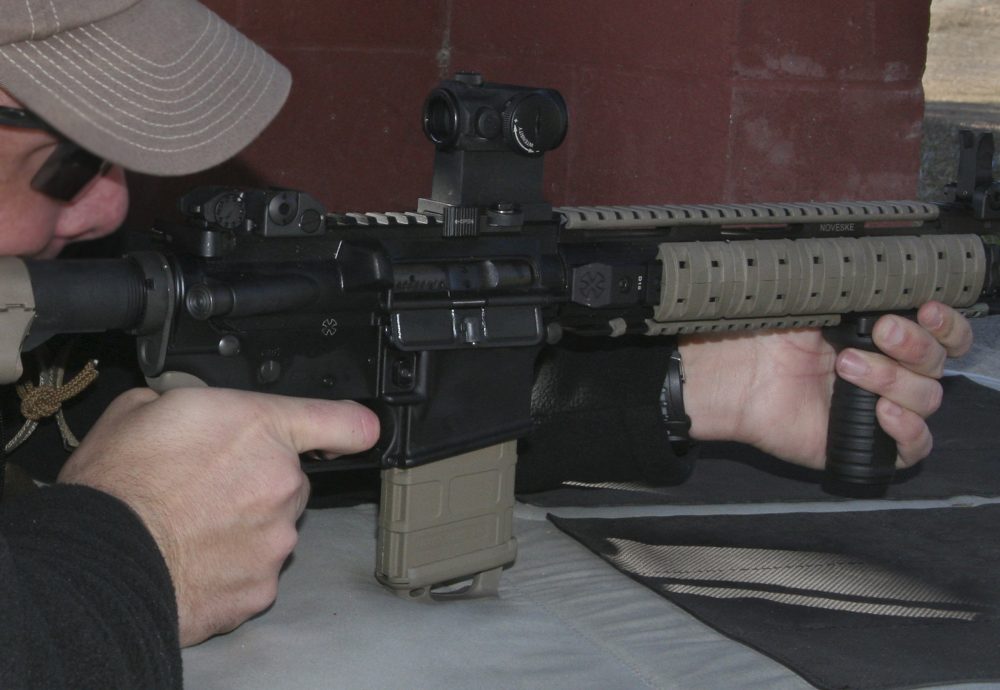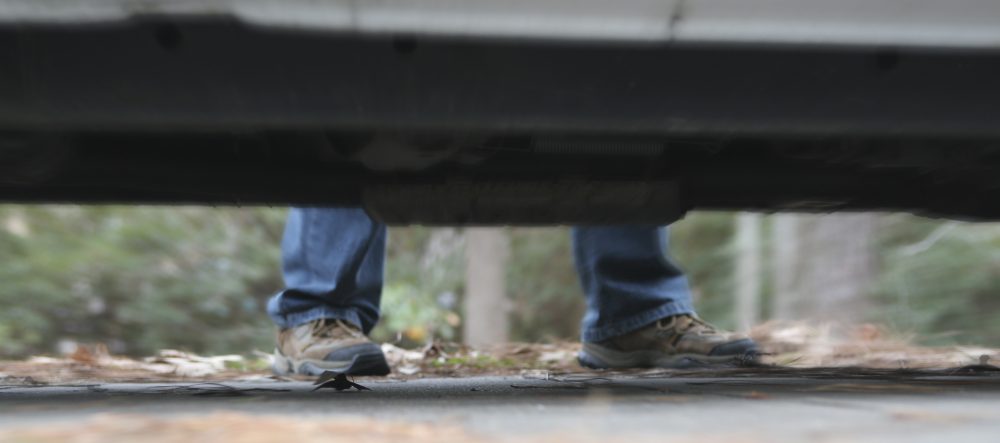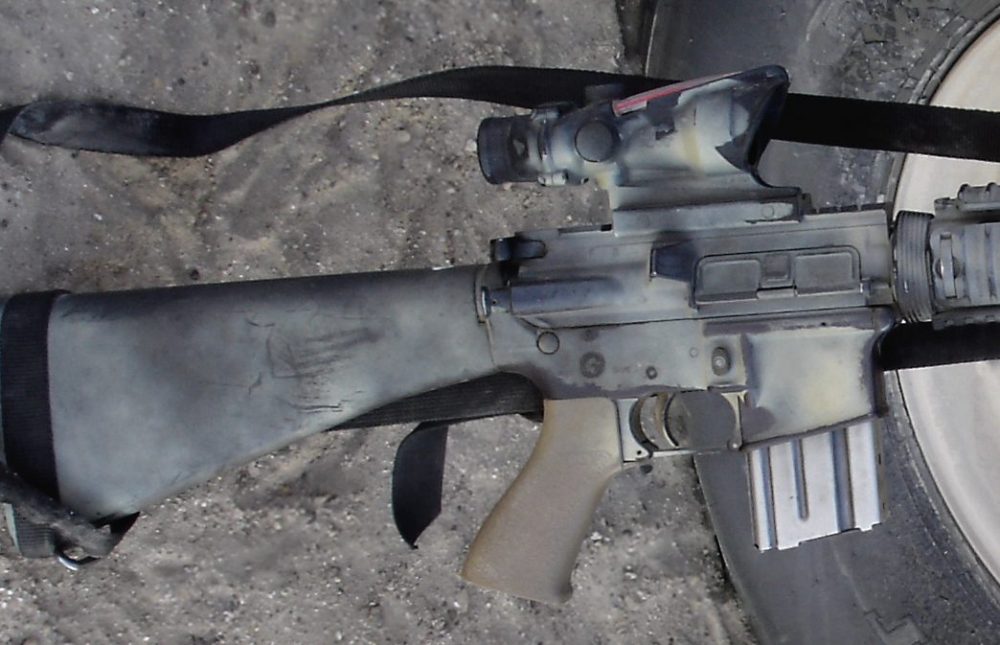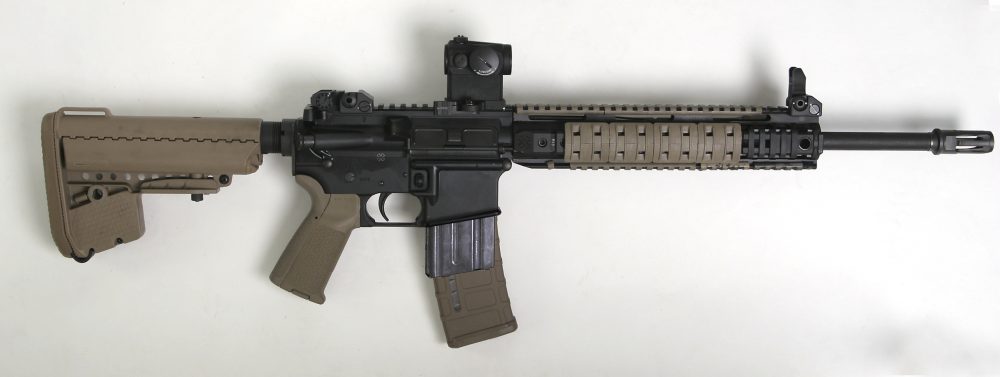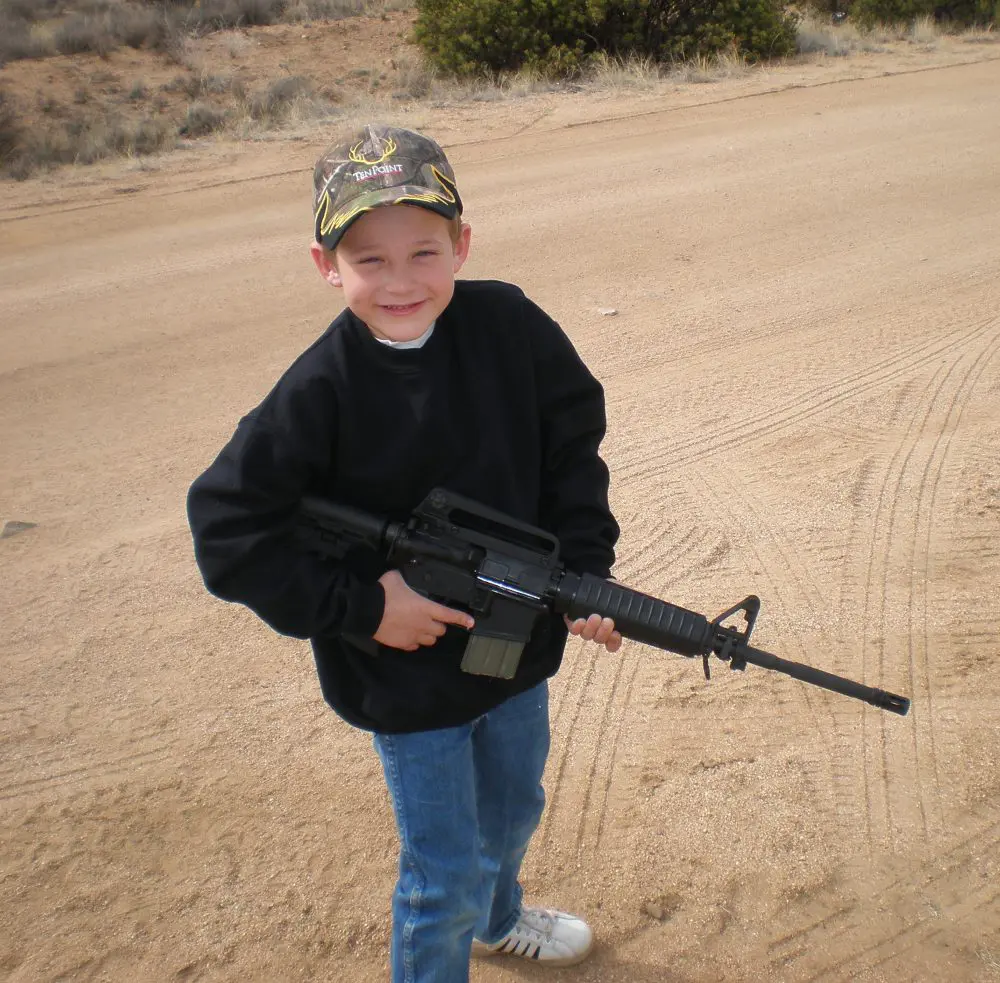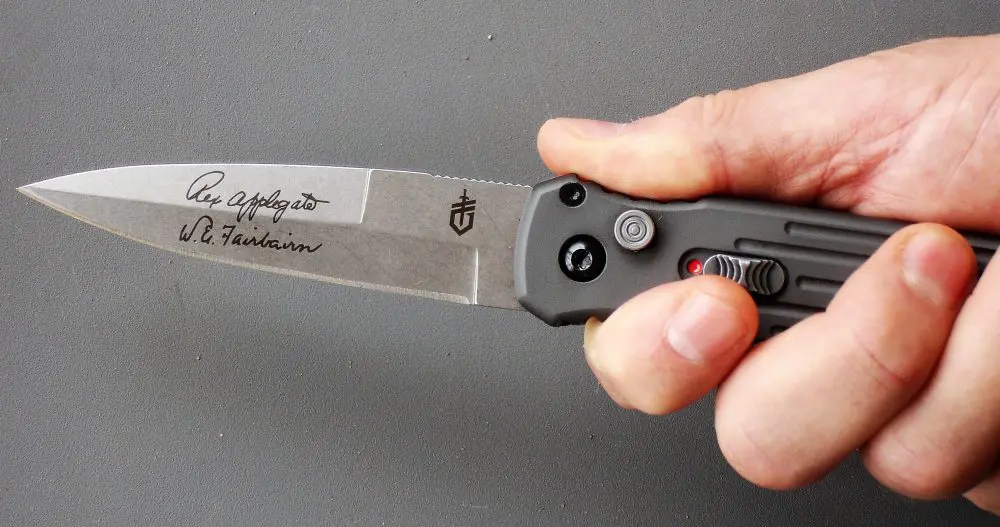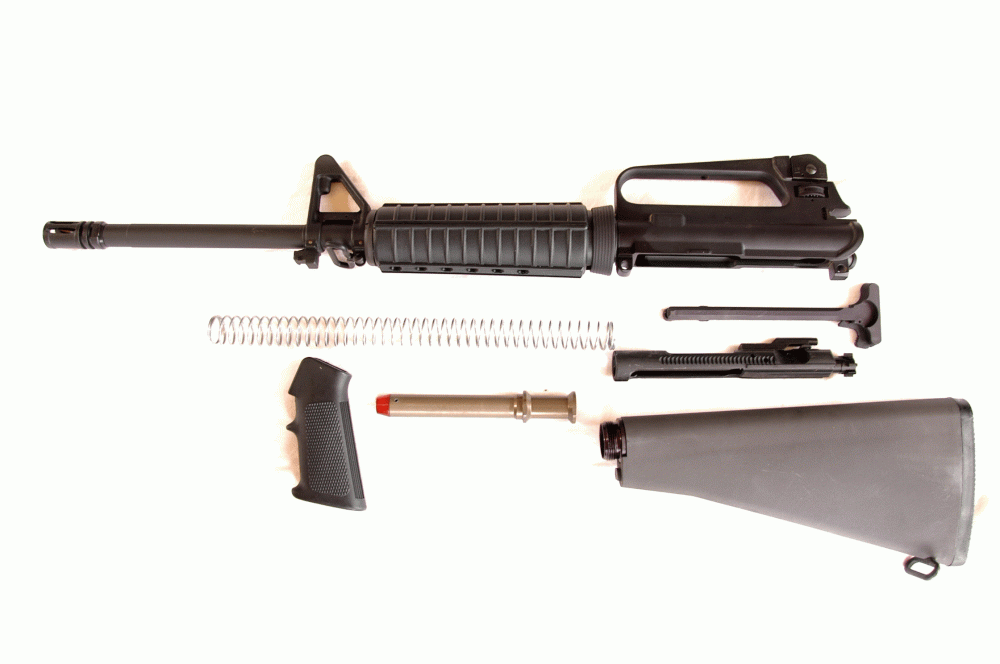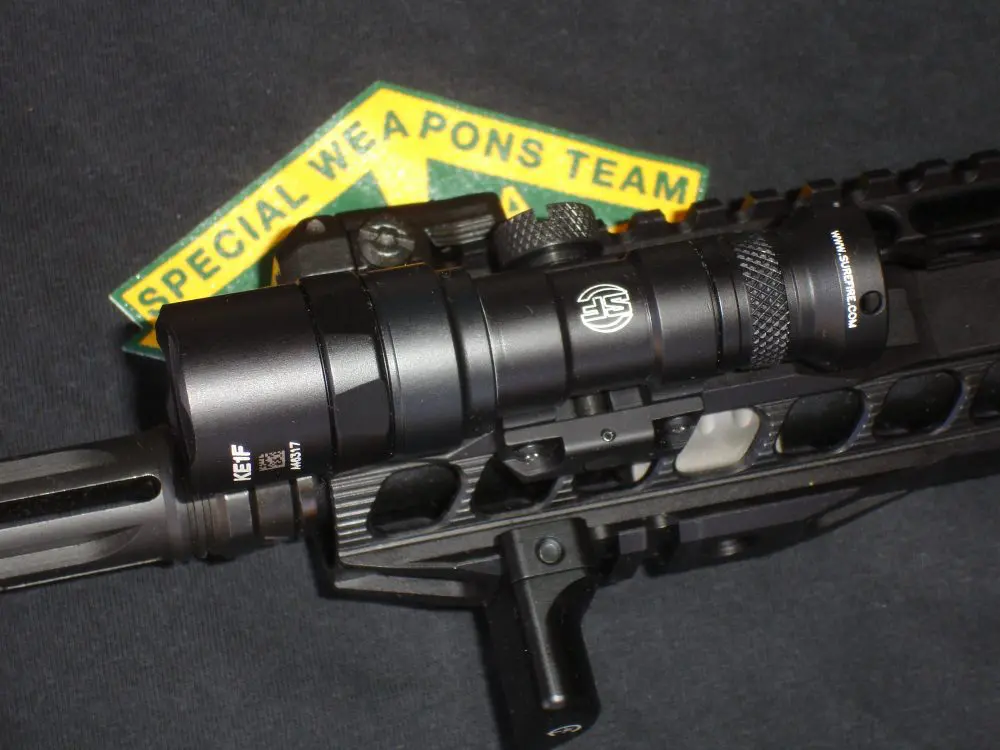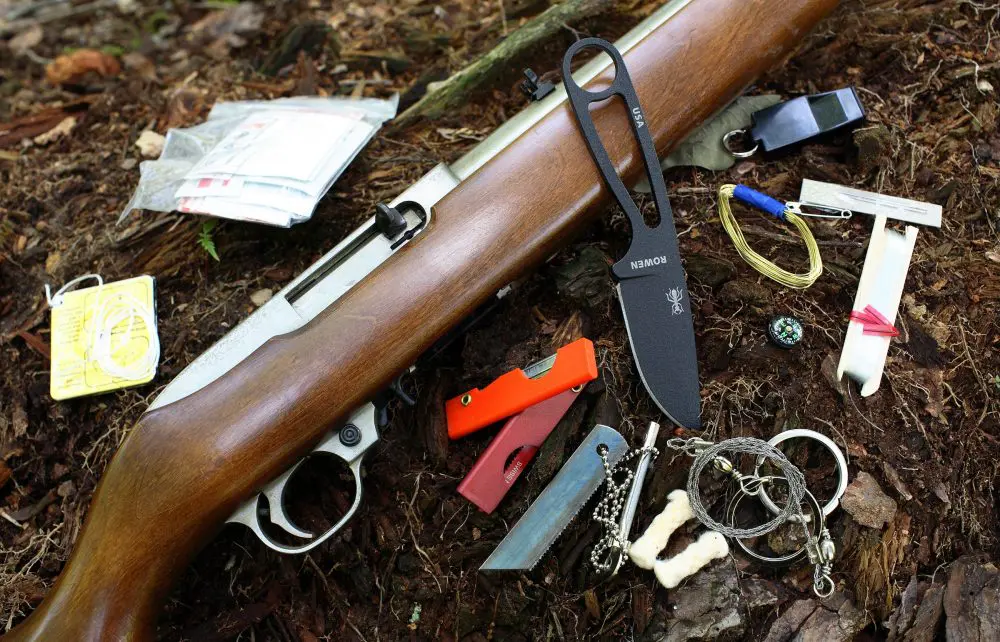The 30-round magazine has been with us for the majority of the M16 series’ service. The original 20-round magazines nearly disappeared for awhile, seeing use in only a few niche areas such as high-power service rifle competition and with a handful of proponents.
There are, however, some instances where the shorter magazine can actually outperform its higher capacity counterpart, and savvy shooters employ the best magazine to match the mission. Below are a few situations where the 20 may provide better service.
Twenty-round mag is often underrated and may be best tool for carbine user in some applications.
Table of Contents
VEHICULAR USE
Long guns are a pain to employ or deploy from inside a vehicle, and the more accoutrements on the rifle, the greater the difficulty.
A fighting optic adds to the height of the system amidships where the weapon must be maneuvered around seats. In addition to this, the extra length and forward curvature of the standard 30-round mag seem to grow while trying to use the carbine from inside of a wagon or trying to expeditiously dismount from same. The 20-rounder can really shine in this application and can give you one less thing to hang up on the console, seatbelts, your own gear, etc.
Once out in the open air, but still fighting around the vehicle, the old-school 20 has some additional applications. When going low and shooting under the vehicle, the 20 will allow some shooters to just go to a standard low prone and shoot. There may be some combinations of optic, vehicle clearance and relative slope of the fight’s location that prevent this, but in many cases the shooter can prone out and get hits. When using the standard GI mag, this will probably not be the case.
There isn’t enough clearance on the average vehicle, necessitating an alternate firing position such as the rollover prone. Many average rifle toters are not aware of these techniques and, even among those in the know, it is slower and somewhat less certain. I have shot a fair amount from the rollover prone and, when testing against a timer to an ankle-sized target, shooting under the nine-inch limbo pole, I averaged 6.3 seconds (standing to rollover prone/25 yards). Simply proning out low with a 20-rounder allowed me to get slightly better hits at an average of five seconds, or a second and a third faster. For a less familiar shooter, that time and hit differential would be even more significant.
If the shooter goes high behind the vehicle, there is still benefit to the short mag. Look at any video or stills from an extended barricade situation and you will see shooters set up modified foxhole/jackass prone with elbows over the hood or roof. Not an ideal use of cover and it opens the shooter to ricochet hazards, but it is what often occurs.
The standard mag ratchets this position up a few notches higher to clear those extra ten rounds off the hood. In this case, a 20 may be an equipment solution to a tactics and training issue, but it is an option to get the shooter lower.
Magpul PMAG 20 with Ranger Plate clears pistol grip slightly, allowing magazine monopod prone as low as physically possible.
LOW PROFILE
In some undeveloped parts of the world, there are times when our men go armed and low profile to keep from disturbing the peace while covering six. Since this is not something most units are routinely equipped to do, a great deal of improvisation happens.
Hiding an M4 while keeping it ready to deploy is challenging. There are ways to do it, but often the compromise is that, since most units only have 30-round mags, the carbines must be carried in whatever discreet manner without a mag inserted. Many of the common low-profile carry methods will allow a 20-rounder on board, as the pistol grip descends farther from the receiver than the mag.
A similar situation exists for reloads. If a user wants to conceal a 30-rounder badly enough and dresses accordingly, he can. But he can do so much more comfortably and with less forgiving attire with a 20.
I have seen several individuals who routinely carried a single 20-round reload on their belt. One was a police sergeant in Texas who wanted the ammo on him when he got to his or a partner’s patrol rifle. Another was a Master Gunnery Sergeant near Baghdad in the wilder times there. He didn’t even have a rifle, but figured if things got bad quickly, he would have the less fortunates’ to choose from. In both of these cases, a 20 was much more manageable and led to daily wear when the larger mag wouldn’t have made the cut.
Shooters with a 20 on board can often get low enough to shoot under obstacles and maintain vertical orientation from low prone, while standard 30-round mag requires alternate position.
SUPPORTED SHOOTING
The best way to get hits is to support the weapon. The lower the shooter gets to the ground, the better for that support and for his cover and concealment from return fire. Shooting off a pack rest with a 30-rounder can lead to some interesting situations. There is the unnaturally fluffed-up pack, the dugout trench to relieve the weight off the mag, etc.
One unit in Iraq that was responsible for counter-IED ambushes solved the problem by acquiring a sea bag full of Vietnam-era 20s from an outbound National Guard unit. After carefully sorting through the badly oxidized old timers, there were enough mags for each shooter to have one in his weapon specifically while in position and run his 30s for the reloads.
Even when shooting off of bipod legs or the bench, many shooters will find they can get a more comfortable position (and resultant better hits) with the short mag locked in. Serious Service Rifle competitors use nothing but 20-rounders, since they allow a much lower and more stable prone position.
Those two reasons may not convince a user to replace his 30-rounders, but simply provide a possible utility for another tool in some situations. This thinking is evident in SOCOM’s decision to field 20-round High Reliability Magazines in conjunction with the long barrels on the Mark 16/SCAR Light.
Straight-line body on 20-rounders translates to positive seating, allowing law enforcement pros like this NC Trooper to translate existing pistol reload skills to carbine.
RELOADS
One advantage of the 20 that I have never heard specifically mentioned before is the positive aspect of reloading. Anyone who has been around AR-style weapons for any length of time knows that there are training issues in getting shooters to smoothly and positively seat the magazine. The whole Western shooting world has not quite gotten the message on seating the magazine positively while maintaining contact (no whacking or the hamfisted double smack) and then pulling down to ensure it is locked in. This is known alternately as push-pull or tap-tug, but whatever you choose to call it, it works.
The problem is that the curved “banana clip” box of the 30-round magazine doesn’t lend itself to the upwards pressure vectoring where it belongs in order to seat the magazine fully. Trying to seat all 30 on a closed bolt just makes this worse (hence the 28 in a 30 SOP). When an average non-enthusiast shooter reloads with a short mag, there are far fewer, almost rare instances of the magazine not locking. This could be because the traditional 20 and new PMAG 20s are straight-line boxes. All of the pressure applied to them goes toward pushing them straight up the well and into position (The slightly curved 20s available from some vendors may not have this advantage).
Shooters who are primarily pistol trained and are receiving training on a patrol rifle or carbine can easily transfer the basic mechanics of the reload to a 20-round mag and carbine. The magazine is just small enough that the same basic grasp and insertion method can be used.
This is not necessarily the case with the 30. The full-size mag is best reloaded with a slightly different grasp of the magazine. Attempting to reload it like a pistol generally leads to fumbles of alignment and often to seating/locking issues. Again, this may be addressing a training shortfall with an equipment solution, but for some looking to transition pistol users to occasional rifle employment, it is a worthwhile consideration.
Military M16A4 with Vietnam-era 20-round mag.
BALANCE
Rifles these days are heavy. In some cases they are so encumbered with good gear that the ability to shoot them well from two points of contact is jeopardized. The user may simply have too many mission-essential items on board, such as a relatively heavy white light, IR setup and issued optic and can’t strip the weight down. The difference of ten rounds on the centerline may sway the balance to the good or bad. Only experimentation can tell.
I’ve shot some SBRs that behaved better with a 30-round mag, while many 16- to 20-inch rifles shoulder much better with a 20-rounder in the offhand. Since the purpose is hitting, the additional ammunition may be less important than the ability of the noodle-armed rifleman to place the shot that’s in the chamber.
Long and short of it. GI 20 compared with PMAG 30.
DOWNSIDES OF THE 20
There is no such thing as a free lunch, and for all the glorious things that the junior mag provides, there are some downsides. Foremost is the obvious—there are fewer rounds in the weapon. That may or may not be a deal breaker in some mission profiles.
Another issue relates to carrying spares. Twenties carry well in belt-mounted pistol-type pouches. They do not carry well in the great majority of available chest and MOLLE-type rigs. Any advantage gained in transferring smooth pistol reloading skills to the carbine is lost if the shooter has to fumble finger his mags out of the bottom of a pouch.
Another is a significant one for me. The strength of the 20 is in allowing the rifle to get lower, so the ability to use the magazine as monopod support is sacrificed. I have grown very fond of the magazine monopod position and looked for a way to reconcile that with the usefulness of the 20.
There is a solution! The Magpul PMAG 20, when used with a Ranger Plate, just ever so slightly clears the pistol grip. It can be used as a very low monopod against level or depressed targets. For elevated targets, the pistol grip interferes. Pretty handy, and the Ranger Plate makes the magazine behave even more like a pistol mag in reloads.
A less distinct downside is that single-handed manipulations are somewhat more positive with the full-size magazine. However, those same drills are far from difficult with the 20-round mag and can be trained to.
SO WHAT?
The 20- or 30-rounder question is somewhat of a salt and pepper situation. There are some who prefer one and have no use for the other. Others will use both and possibly each alone in certain situations.
The 20 excels in some areas. If an outfit is vehicle bound, employs designated marksmen, has discreet carry roles, or primarily uses pistols, a serious consideration of whether 20 rounds are “enough” would be in order.
SOURCE:
Magpul Industries Corp.
Dept. S.W.A.T.
400 Young Court
Erie, CO 80516-8440
(877) 462-4785
www.magpul.com
